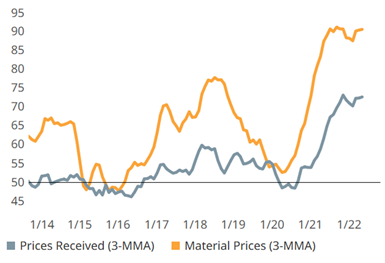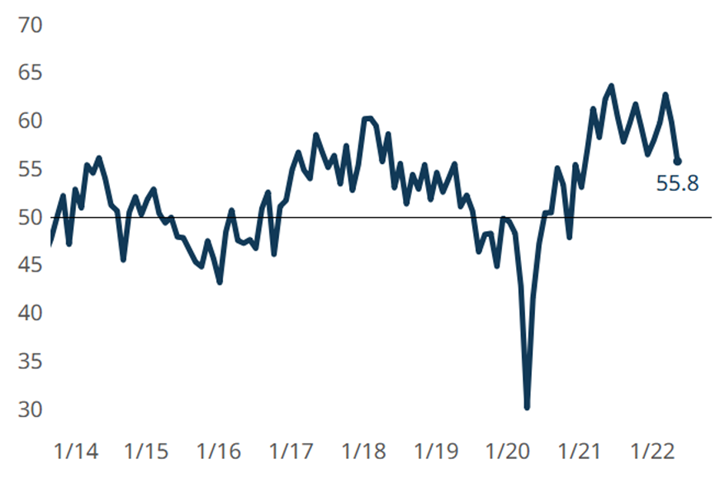Moldmaking Industry Expansion Slows “‘All Around”’ in May
Moldmaking continues on the slowing expansion trend for the month of May according to Gardner Business Intelligence’s latest report on the Moldmaking Index.
#ecomonics
GBI: Moldmaking shifts between accelerated and slowed expansion in short periods of time. The May index was consistent with trends, showing a second month straight of slowed expansion.
The Gardner Business Index (GBI): Moldmaking closed May at 55.8, four points lower than April of this year and 6.5 lower compared to May 2021. While moldmaking has not seen an Index this low since January 2021, the industry still reports expansion, albeit at a slowing rate the past two months. The month’s decline is not surprising based on Gardner Business Intelligence’s examination of April’s Index.
The message in April was “if recent (past 12-month) history repeats itself, we can expect one more month of slowed expansion before accelerated expansion kicks in again.” May is that “one more month.” The pressure is really on history’s predictive power come June.

Pricing is not factored into GBI indices, though pricing questions are asked in the GBI survey. The trends between material prices and prices received are the same at differing levels, which have widened over time. (This graph plots three-month moving averages.)
Unlike April’s indices, most components behaved in a similar manner for the May GBI: Moldmaking, indicating slowed expansion. Out of all of the components, new orders and production declined the most, followed by a smaller decline in backlog. Supplier deliveries showed a fourth month of slowed expansion, a reading that still reflects artificial highs due to supply chain issues, and the employment index showing accelerated expansion for the third consecutive month.
Included in the GBI survey — but not factored into the Index — are pricing metrics, which are mentioned here for additional perspective. Starting two years ago, the materials price index has consistently shown accelerated expansion, before peaking in July 2021 and leveling off. The prices received index has shown a similar pattern but at lower levels, with the gap relative to materials pricing widening over time. This indicates that shops are paying more for materials than they’re able to pass along in pricing.
RELATED CONTENT
-
Moldmaking Starts off 2021 With Expanding Orders and Production
The Moldmaking Index reports expanding conditions in six of the last seven months, aided by improving domestic new orders activity.
-
Moldmaking Industry Ends Four-Month Expansionary Run
Slowing new orders, production and backlog activity result in a 47.9 reading for November, indicating a potential incoming challenge for the world supply chains as we enter 2021.
-
Moldmaking Breaks Out of Prolonged Contraction for First Month Since COVID-19
July Index reading exceeds 50 on expanding new orders.











